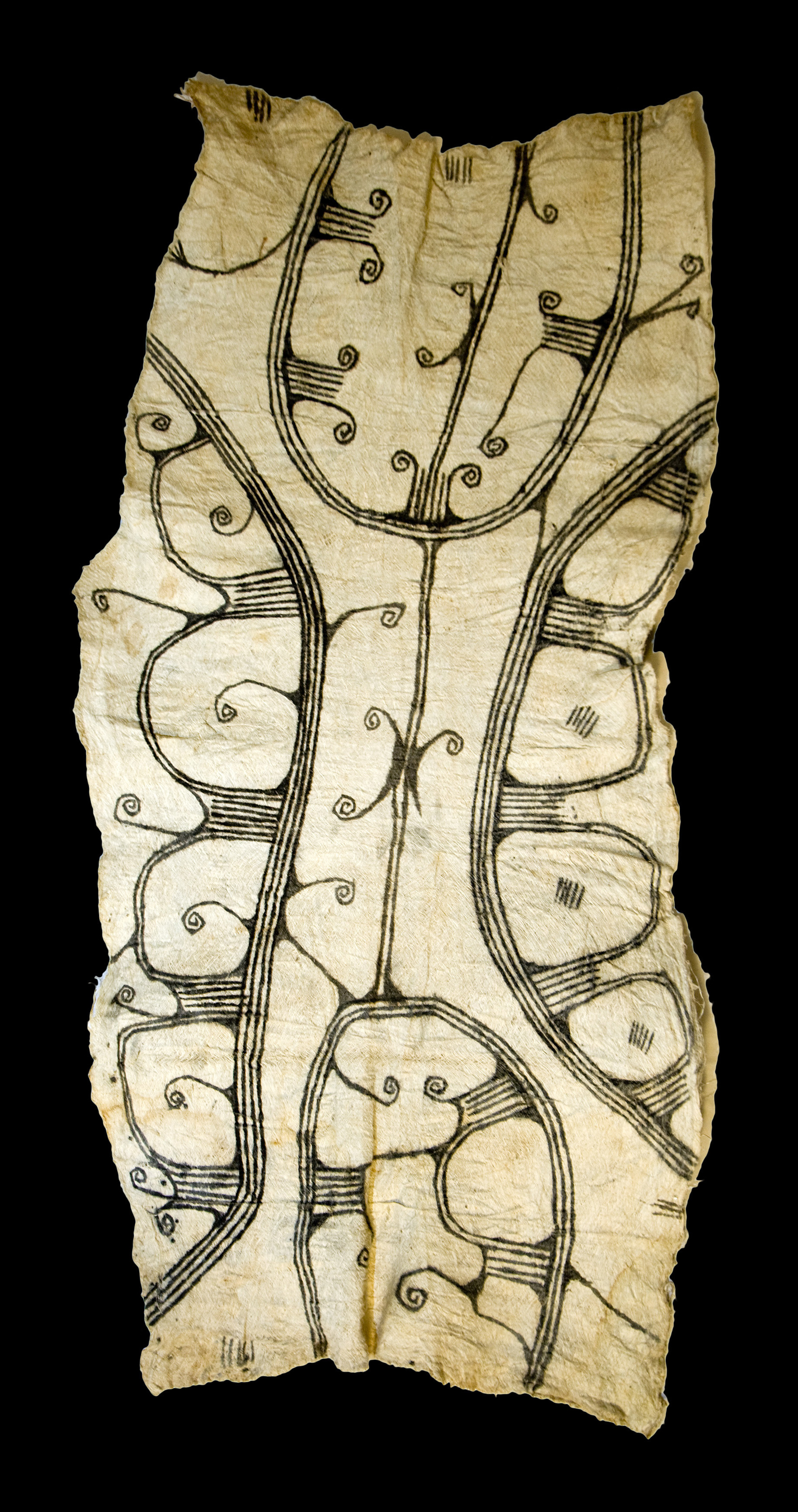Samples of textile clothing hang on the exhibit’s walls, some displaying depictions of spiderwebs, pig tusks and maps of villages while others reveal repetitious designs of spotted leopard prints, wild vines and strokes of intersecting lines.
The Fowler Museum’s new “Second Skins” exhibit juxtaposes the iconography of two forms of painted barkcloth originating from Papua New Guinea and Central Africa.
“In both cultures, barkcloth is made from the soft inner bark of trees (that have) these longitudinal fibers. When you beat them, they spread out, (creating) this sort of felting action. The more you beat them, the more supple they become,” said Gemma Rodrigues, the Fowler’s curator of African arts.
Although similar in their production of barkcloth as clothing, each region of the world has a distinct culture that presents the process and artworks in its own way, Rodrigues said.
For the Omie people who live in an isolated province in Papua New Guinea, the designs seen in the exhibit were once tattooed on the bodies of young men, serving as their rite of passage into adulthood. Today, the women of the Omie, who are responsible for painting the designs on hand-made barkcloth, teach the understanding of this visual culture to the next generation of Omie women, passing down a tradition that remains today.
The gradual transition of these tattoos from permanent images on skin to highly prized artworks painted on barkcloth clothing allowed the women chiefs of the Omie to make the conscious decision of releasing their pieces into the international market in 2006, a source of profit for their community. The recent release of Omie barkcloth has led to the Fowler Museum’s selection as the first American Museum to showcase the Omie barkcloth, Rodrigues said.
Similar to the Omie, the Mbuti people residing within the region of the Ituri Forest within Central Africa also experience an isolation that has made their barkcloth works a source of discussion. However, the Mbuti did not make the same decision as the Omie to sell their barkcloth to museums and collectors abroad, and their continued seclusion limits the understanding of what the motifs mean.
One of the characteristic patterns seen on Mbuti barkcloth is the abrupt change from one design to another at the folds of the clothing, a phenomenon that has been suggested to parallel their complex and distinctive vocal traditions.
“Their vocal traditions (consist of) hocketing, where you have different people singing different rhythms and interrupting these rhythms, and you have yodeling, moving from a chest voice to a head voice,” Rodrigues said.
According to Rodrigues, Robert Farris Thompson, an art historian at Yale University, suggested that Mbuti visual design is analogous to these same kinds of aesthetic and acoustic structures that characterize their music.
Regardless of what these artworks mean, the origin and detailed intricacy of the barkcloth designs have revived the fascination of artists, writers and filmmakers, people seeking a way to gaze into the lives of indigenous cultures whose stories are told through these “Second Skins.”
